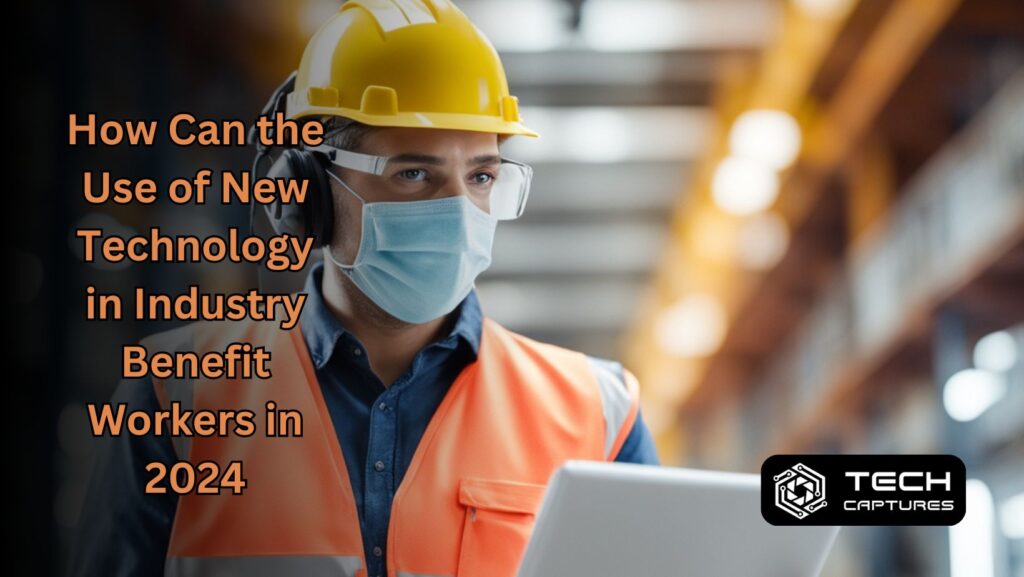How Can the Use of New Technology in Industry Benefit Workers? As we move into 2024, the impact of new technology on industry is becoming more evident. But what does this mean for the workers on the ground? Let’s dive into how these advancements are not just reshaping industries but also bringing a wave of benefits to the workforce.
Table of Contents
Enhanced Productivity and Efficiency
How Can the Use of New Technology in Industry Benefit Workers in 2024? Imagine a workplace where tedious, repetitive tasks are a thing of the past. Thanks to automation and AI integration, this is becoming a reality. For instance, Amazon has implemented robots in their warehouses to handle repetitive tasks like sorting and moving items, which has significantly improved productivity. Workers can now focus on more meaningful and creative aspects of their jobs, leaving the mundane tasks to machines.
And it doesn’t stop there—new tools and machinery are reducing the physical strain on workers. Consider Caterpillar’s autonomous mining trucks; these vehicles operate without a driver, reducing the risks and physical demands on workers in hazardous environments. It’s like having a superpower that boosts productivity without the extra sweat.
Skills Development and Career Advancement
The one answer for your question: How Can the Use of New Technology in Industry Benefit Workers is how technology is opening doors for career growth. With the rise of new tech, there’s a growing need for upskilling and reskilling. Companies like IBM offer extensive training programs, such as their SkillsBuild initiative, which helps workers stay ahead of the curve and adapt to new technological advancements. This not only keeps their skills relevant but also paves the way for career advancement.
Moreover, new job roles are emerging, especially in tech-related fields. For example, the rise of cloud computing has created roles such as cloud architects and cloud security specialists, offering workers the chance to move into higher-paying and more specialized positions.
Improved Workplace Safety
Safety is always a top priority, and new technology is making the workplace safer than ever. Imagine wearing smart gear that monitors your health and safety in real time, alerting you to potential hazards before they become a problem. This is becoming more common with advanced safety equipment like the SmartCap, which monitors driver fatigue in real time to prevent accidents.
Moreover, predictive maintenance uses data to prevent equipment failures, ensuring that workers operate in a safer environment. General Electric (GE) has implemented predictive maintenance across its operations, leading to significant reductions in machine failures and workplace accidents. It’s all about keeping everyone safe while they do their best work.
Increased Flexibility and Work-Life Balance
Technology isn’t just making work easier—it’s also making life better outside of work. Remote work capabilities have expanded, thanks to platforms like Zoom and Microsoft Teams, giving workers more flexibility in where and how they work. This shift is helping people better balance their personal lives with their professional responsibilities.
With automation making it possible to have more flexible work hours, job satisfaction is on the rise. Companies like Zapier, which operates entirely remotely, allow employees to set their schedules, leading to higher job satisfaction and retention rates. It’s a win-win for everyone.
Enhanced Communication and Collaboration
How Can the Use of New Technology in Industry Benefit Workers? Gone are the days when collaboration meant endless meetings and back-and-forth emails. Digital collaboration tools have transformed how teams work together. Whether it’s through Slack or Trello, workers are now more connected and informed than ever before. This improved communication is not just making work smoother; it’s also empowering workers to make better decisions on the fly.
For example, Siemens uses digital twins—virtual replicas of physical assets—to improve collaboration between design and manufacturing teams, resulting in faster and more efficient production processes.
Economic Benefits for Workers
Let’s talk money. When technology boosts productivity, it often leads to higher wages. Companies that benefit from increased output, like Toyota, which has implemented automation across its assembly lines, are more likely to share the economic gains with their workers through bonuses and wage increases.
Additionally, industries that embrace technology tend to stay competitive, which, in turn, provides greater job security for workers. Tesla, for example, has invested heavily in automation, helping the company maintain its competitive edge and ensure long-term employment stability for its workers. In other words, tech adoption is not just about doing more—it’s also about providing a stable and prosperous future for the workforce.
Challenges and Considerations
Of course, no change comes without its challenges. Adapting to new technology can be daunting, and only some are ready to jump on board immediately. There’s a learning curve, and some workers might resist the change. That’s why companies must provide the right support and resources to help workers transition smoothly. Programs like Google’s IT Support Certificate are designed to ease this transition by offering training in new technologies.
And let’s not forget about inclusivity—making sure that all workers, regardless of their background or skill level, can benefit from these advancements. Organizations like Code.org are working to close the digital divide by providing coding education to underrepresented communities, ensuring that everyone has the opportunity to succeed in a tech-driven world.
Conclusion
How Can the Use of New Technology in Industry Benefit Workers? As we look ahead to 2024, it’s clear that the use of new technology in industry isn’t just about making companies more efficient—it’s about making the lives of workers better. From enhancing productivity and safety to opening up new career opportunities, technology is set to bring a wave of positive changes. While there are challenges to navigate, the benefits far outweigh them, promising a brighter, more prosperous future for workers everywhere.

